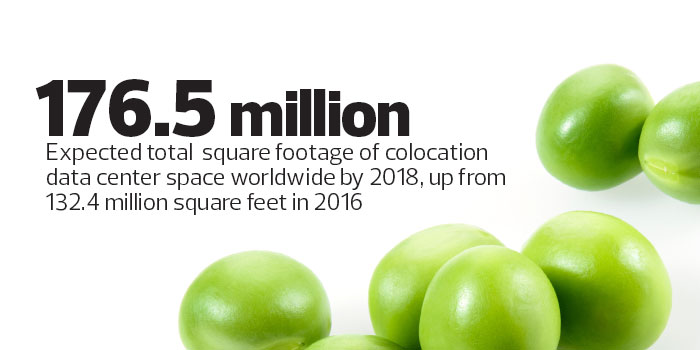When Colocated Data Centers Make Sense for State and Local Governments
Thanks to rapid growth, many cutting-edge local government agencies — think incubation hubs or economic development initiatives — find themselves in need of additional IT infrastructure. At the same time, tight budgets challenge public CIOs to make their resources stretch even further.
Accordingly, IT leaders have an important decision to make. Should they resolve the need for expansion by building a new data center, or choose a professionally managed vendor solution?
CIOs expect a variety of capabilities from modern data centers. In some cases, placing IT equipment with an established colocation provider may be more feasible than anticipated. What’s more, officials can often make a strong business case for such an arrangement.
The Attributes of a Modern Data Center
The modern data center is a highly capable facility that combines the foundational physical infrastructure required to provide IT services. Professional design and construction companies understand the requirements of large- and small-scale IT organizations and architect these facilities to provide such services cost-effectively in a highly competitive environment.
In new data centers, the trend is toward densities approaching 20 to 30 kilowatts per IT cabinet, with extreme environments exceeding 50kW. Data centers can achieve such scale through innovative sustainability measures, such as close-coupled cooling technologies, water reclamation techniques and onsite electrical generation with fuel cells. As a result, modern data centers can derive great efficiency from economies of scale. Quality data centers will employ multiple high-bandwidth network connections from diverse network providers to drive network resiliency up and bandwidth cost down.
For physical security, guards, bulletproof glass, cameras and biometric authentication are common features of well-equipped data centers. Together, these provide a secure facility for IT environments that contain sensitive or regulated data, such as healthcare information and confidential intellectual property.
Data Center Tech Requires Less of a Human
Unlike your kids, your servers don’t need to be hugged. Application specialists and systems engineers typically spend little time in on-premises data centers. Highly capable, advanced remote management is prevalent in modern servers, storage systems and network devices, permitting agencies to accomplish a great deal of low-level systems engineering work remotely. Application specialists already deploy services in this manner and rarely, if ever, need to physically touch the servers and storage.

SOURCE: 451 Research, "Datacenter KnowledgeBase," April 2016
There are times when systems require a hands-on approach — say, a failed hard drive needs to be replaced. However, many data centers now offer operational services such as 24/7 monitoring and a “white glove” service for component repair and replacement. Virtualization makes colocation even more pragmatic. Virtualized servers drive server density (a strength of modern data centers) and reduce the amount of hands-on time that systems engineers must spend with equipment.
Owned vs. Colocated Data Center
Government budgets are always constrained, and CIOs are under considerable pressure to ensure they provide significant value while keeping costs down. A strong business case is essential to guide decision-making.
Constructing and maintaining data centers are expensive and require large capital expenditures. In government, this frequently means issuing bonds, increasing millage rates and pursuing other arrangements that permit long-term financing. Moving services to a colocated data center converts these costs from capital expenditures (CAPEX) to operating expenses (OPEX), which may provide for smoother budgeting.
Technology fluctuates, projects come and go, and the physical capabilities that your current IT projects require may change. An OPEX colocation model is an easy way to rightsize your requirements (and reduce costs) on a granular basis. Colocation providers offer services ranging from single servers to multiple IT cabinets and thousands of square feet. Conversely, constructing a data center to provide services equal to a colocation facility is a significant endeavor, particularly if IT requirements are small.
Contracts with colocation providers allow CIOs to avoid direct infrastructure costs for both the facility and the skilled labor to maintain it.
Service-level agreements ensure that critical service levels are met, and penalty clauses provide a negotiable degree of relief in the event of significant unplanned outages. Many national colocation providers maintain data centers across the country. A single contract can allow for geographic diversity, adding an additional layer of resiliency to IT services.
Increasing Operational Flexibility
After converting CAPEX data center expenses into OPEX colocation contracts, the next logical next step is to convert the CAPEX cost of servers and storage into OPEX. Compute and data services from public cloud vendors are flexible, letting IT architects build resilient systems that perform well for numerous applications. This frees CIOs from the burdens of managing equipment, and they can bring to bear virtually unlimited resources — on demand.
Agencies should perform careful analyses to ensure that the costs of an exclusively public cloud solution do not exceed the costs of maintaining a presence at a colocation facility. A common solution is to employ a hybrid-cloud or “peak-shaving” model: Resources at a colocation facility fulfill the majority of application requirements, and an agency maintains a public cloud presence to handle the inevitable demand peaks. In this scenario, agencies can achieve the best of both worlds.









